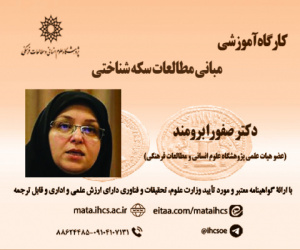بررسی پایدار شبکه هوشمند معابر شهری جهت حضور به موقع یگان ناجا بر اساس الگوریتم Dijkstra (مطالعه موردی: شهر اهواز) (مقاله علمی وزارت علوم)
درجه علمی: نشریه علمی (وزارت علوم)
آرشیو
چکیده
مسئله: بزهکاری و جلوه مختلف خشونت و بی نظمی از پدیده های بسیار پیچیده اجتماعی است و در صورت وجود بستر مکانی و زمانی مساعد، زمینه بروز جرم و تکرار آن فراهم می گردد و به مرور زمان یک محیط جغرافیایی به یک کانون جرم خیز تبدیل می شود. شهر اهواز دارای محلات متعدد و مراکز فعالیتی پراکنده و فضاهای خالی ساخته نشده و فضاهای سبز همچون پارک ها، نخلستان ها و باغات در بافت های شهری می باشد که احتمال وقوع جرم را افزایش می دهد. بر این اساس طراحی شبکه هوشمند معابر در شهر اهواز جهت امداد رسانی بهتر یگان انتظامی ضرورت می یابد. هدف: شناخت ساختارهای فضایی شبکه معابر شهر اهواز، میزان وقوع جرم، تحلیل موقعیت یگان های پلیس که نقش بسزایی در راستای خدمات رسانی بهتر یگان امداد و نجات دارد. روش: جهت تجزیه و تحلیل یافته ها از نرم افزارهای ArcGIS، EXCEL و Grafer استفاده گردیده است. همچنین از الگوریتم کوتاه ترین مسیر Dijkstra و الگوریتم اویلر جهت یافتن کوتاه ترین مسیر استفاده گردیده است. نتایج: پژوهش حاضر نشان می دهد آنچه در بررسی کلانتری ها شهر اهواز حائز اهمیت می باشد، توزیع فضایی این مراکز از نظر دسترسی و همچنین فاصله کلانتری ها نسبت به یکدیگر می باشد. با توجه به آنالیز مسیریابی ارائه شده با GIS خیابان مقیمی زاده با فاصله 8 متر نسبت به محل جرم خیز کمترین فاصله و در مقابل بلوار پاسداران و خیابان شهید تندگویان به ترتیب با 523 متر و 653 متر بیشترین فاصله را از یگان پلیس تا محل جرم را دارند.Sustainable Investigation of the Smart Network of Urban Roads to Attend Naja on Time Based on Dijkstra Algorithm (Case Study: Ahwaz City)
Problem: Crime and various manifestations of violence and disorder are very complex social phenomena and if there is a favorable space and time, the basis for crime and its repetition is provided And over time, a geographic environment becomes a crime center. Ahvaz city has many neighborhoods and scattered activity centers and empty unbuilt spaces. And green spaces such as parks, groves and gardens are in urban contexts. which increases the probability of crime.
Based on this, it becomes necessary to design a smart network of roads in Ahvaz city to provide better assistance to the police unit.
Objective: To know the spatial structures of Ahvaz's road network, crime rate, analysis of the position of the police units, which plays a significant role in providing better services to the relief unit.
Method: ArcGIS, EXCEL and Grafer software were used to analyze the findings. Dijkstra's shortest path algorithm and Euler's algorithm have also been used to find the shortest path.
Results: The present research shows what is important in the investigation of Ahvaz police units.
The spatial distribution of these centers is in terms of access and also the distance of police stations to each other. According to the routing analysis provided with GIS, Moghimizadeh Street is the least far from the crime-prone area with a distance of 8 meters.







